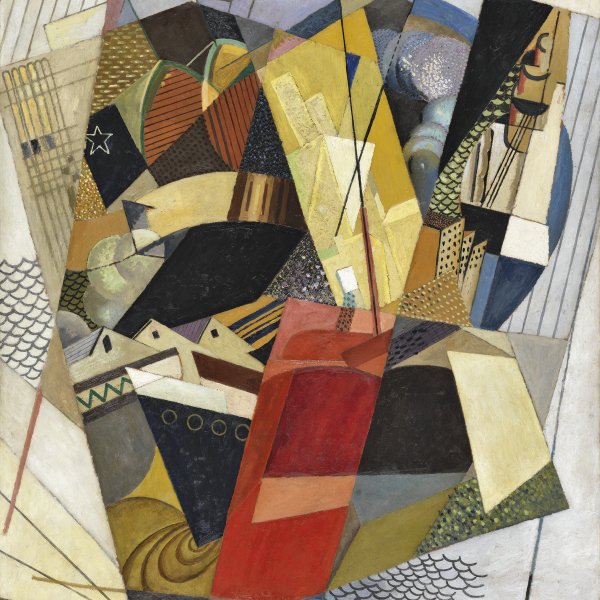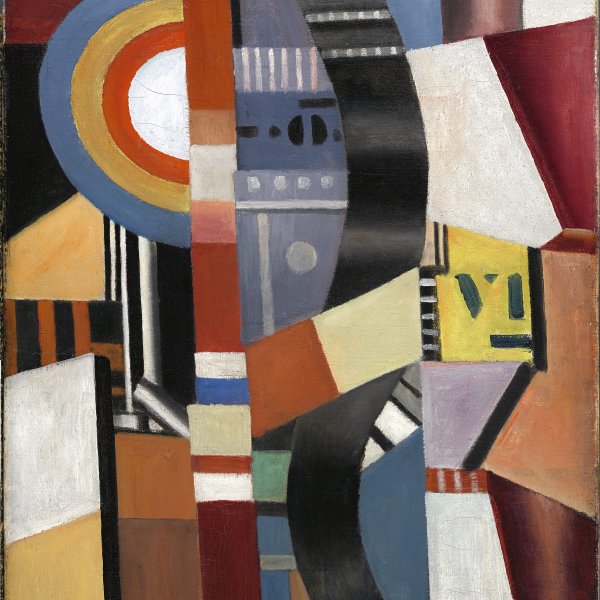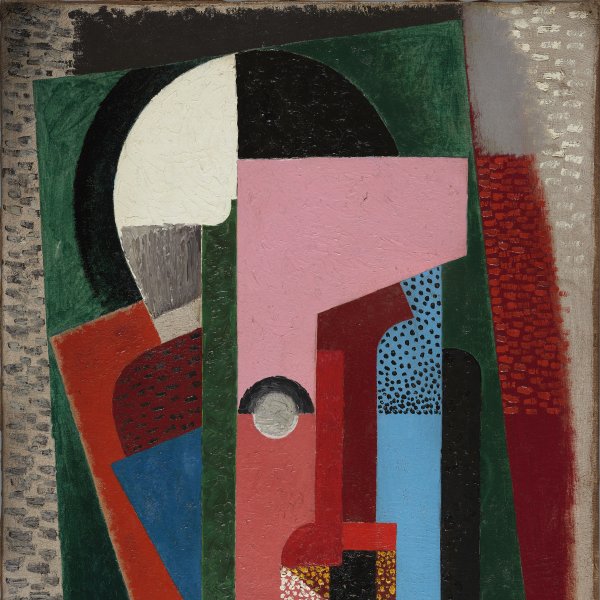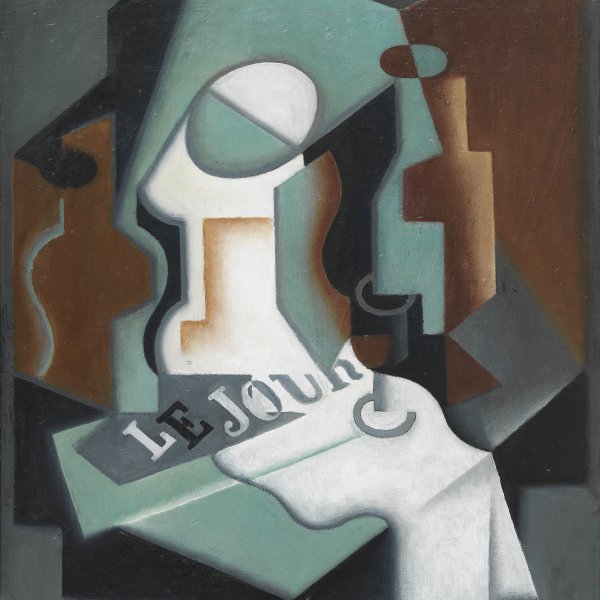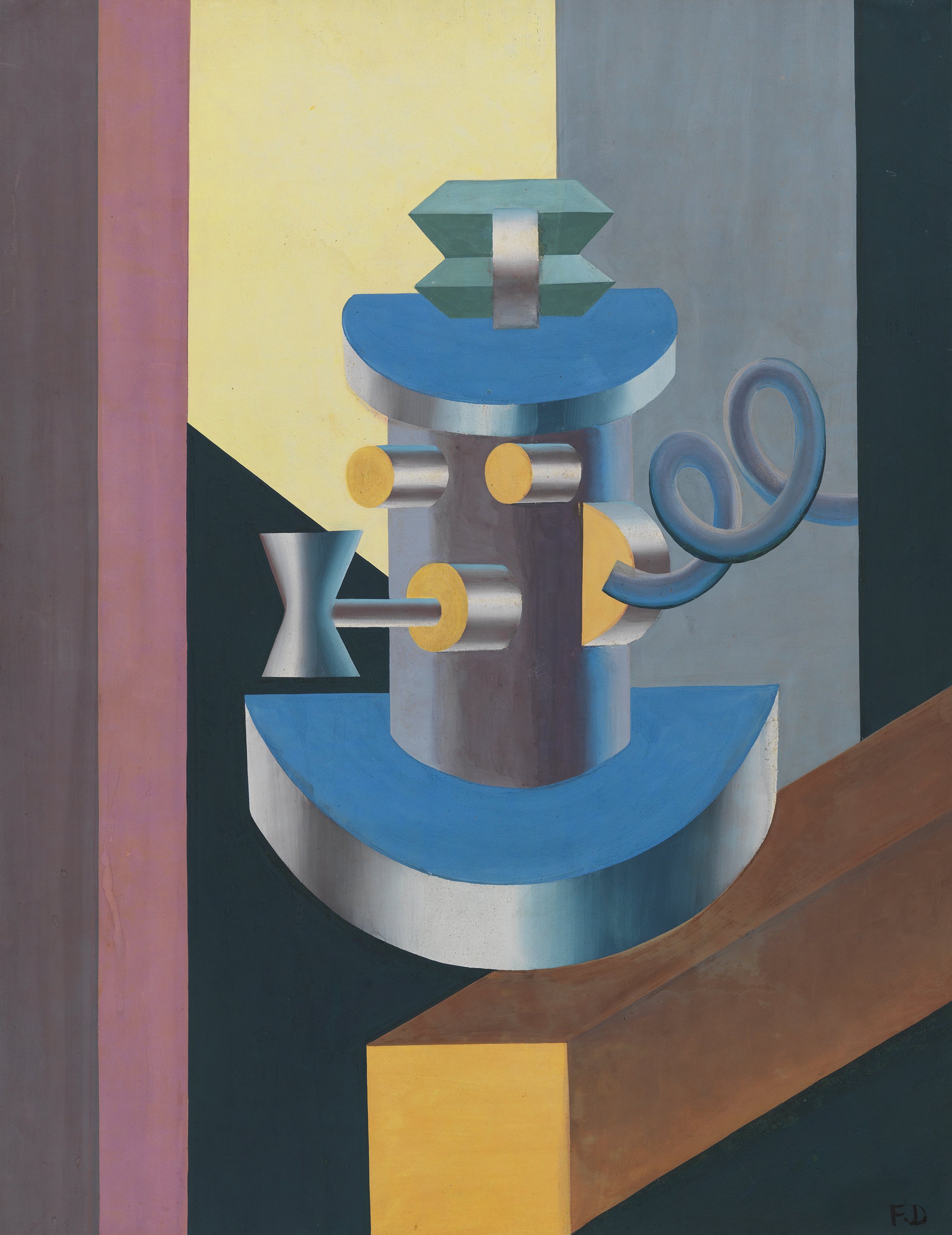Automaton with a Pipe
1917 - 1920
Gouache on Paper mounted on canvas.
67.5 x 52.5 cm
Museo Nacional Thyssen-Bornemisza, Madrid
Inv. no.
523
(1977.32
)
Not exhibited
Level 2
Permanent Collection
Level 1
Permanent Collection
Level 0
Carmen Thyssen Collection and Temporary exhibition rooms
Level -1
Temporary exhibition rooms, Conference room and EducaThyssen Studio
Fortunato Depero, an artist belonging to the second phase of Italian Futurism, began to make a name for himself during the First World War and the early post-war years. In 1914 he met Giacomo Balla, the writer Francesco Cangiullo and the Futurist leader Tommaso Marinetti through the Galleria Sprovieri in Rome, where the Esposizione libera futurista was shown that spring. Shortly afterwards, in March 1915, he and Balla signed the manifesto entitled Riconstruzione futurista dell’universo, which dealt chiefly with abstraction and, for the first time, viewed the applied arts and design as a means of social progress.
The Automaton with a Pipe in the Thyssen-Bornemisza collection should be considered in the context of the artist’s interest in stage design, which is visible both in his paintings and in some of his writings, particularly “Mondo e teatro plastico” and “Il Teatro plastico Depero — Principi ed applicazioni.” Christopher Green dates the present work to between 1917 and 1920, the period in which the artist was especially interested in this field. The head, constructed from an assemblage of pieces, is related to the ideas on automata and puppets expressed by Depero in 1917 in his design of the mobile costumes for Stravinsky’s Le Chant du rossignol, which were commissioned by Serge Diaghilev but finally not accepted, and to his Balli Plastici shown at the Teatro dei Piccoli in Rome in 1918, commissioned by the poet Gilbert Clavel and performed by puppets from the Compagnia Marionettistica Dell’Acqua, with music by Casella, Malipiero and Bartok. The huge wooden puppets of Balli Plastici became a source of inspiration to the artist, who featured them in his paintings until the mid-1920s.
Paloma Alarcó
The Automaton with a Pipe in the Thyssen-Bornemisza collection should be considered in the context of the artist’s interest in stage design, which is visible both in his paintings and in some of his writings, particularly “Mondo e teatro plastico” and “Il Teatro plastico Depero — Principi ed applicazioni.” Christopher Green dates the present work to between 1917 and 1920, the period in which the artist was especially interested in this field. The head, constructed from an assemblage of pieces, is related to the ideas on automata and puppets expressed by Depero in 1917 in his design of the mobile costumes for Stravinsky’s Le Chant du rossignol, which were commissioned by Serge Diaghilev but finally not accepted, and to his Balli Plastici shown at the Teatro dei Piccoli in Rome in 1918, commissioned by the poet Gilbert Clavel and performed by puppets from the Compagnia Marionettistica Dell’Acqua, with music by Casella, Malipiero and Bartok. The huge wooden puppets of Balli Plastici became a source of inspiration to the artist, who featured them in his paintings until the mid-1920s.
Paloma Alarcó





